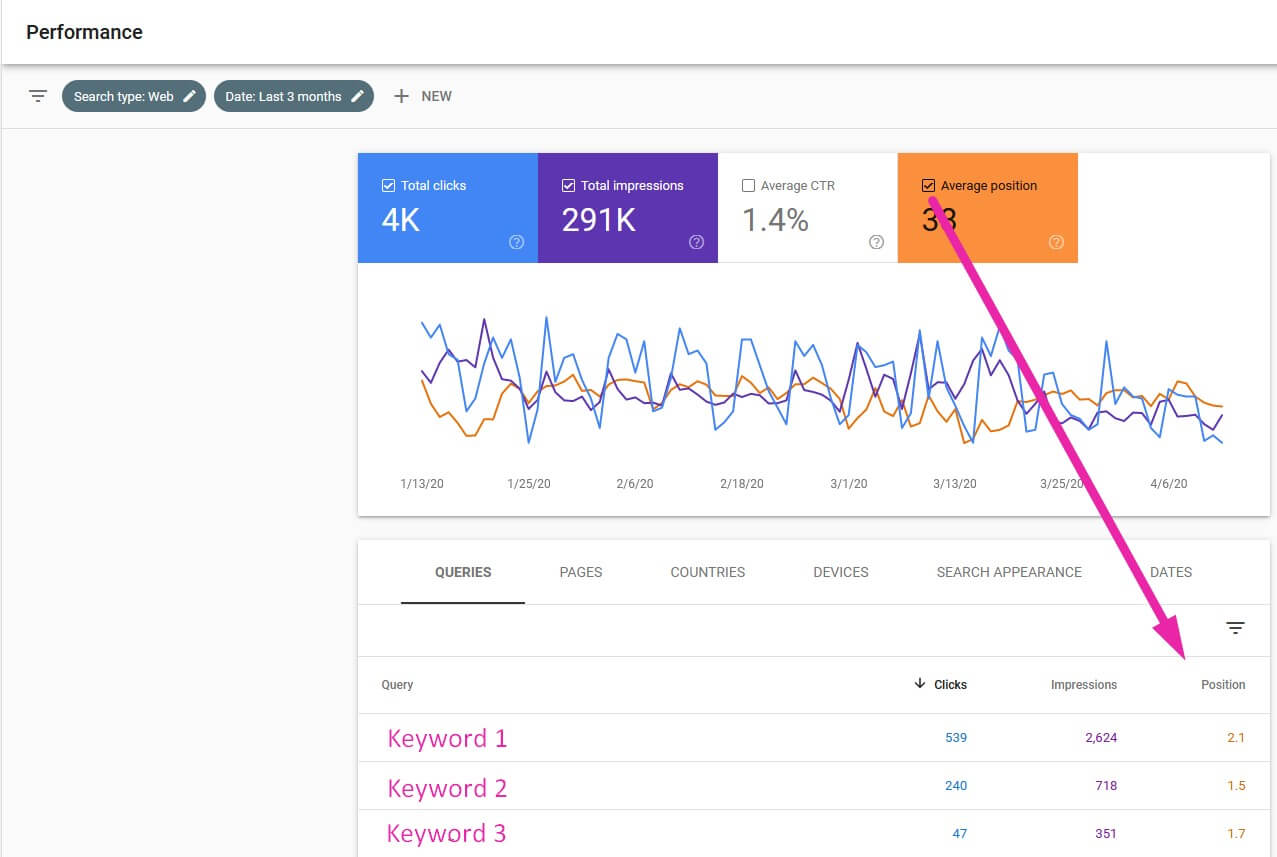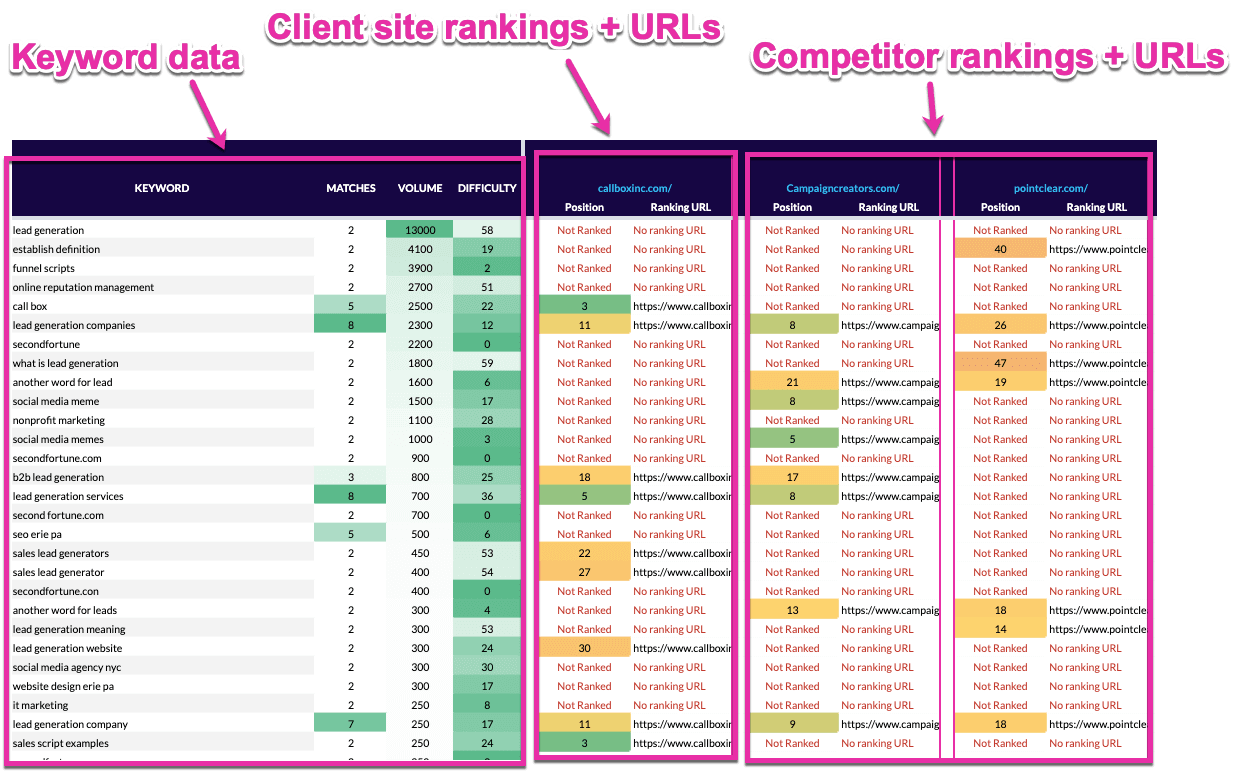7 Tips for Finding Long Tail Keywords

Hand off the toughest tasks in SEO, PPC, and content without compromising quality
Explore ServicesHands up if you’ve ever done this:
Paid too much attention to high volume keywords.
Of course you have. It’s easy to get seduced by the number of searches per month for one of your main keywords. Especially if they are going to potentially send lots of traffic to your website.
Now these keywords have their place, but such keywords are also very competitive.
You can spend tons of time and money trying to rank higher for them. While you should give a lot of attention to these, you should not do it at the expense of long-tail keywords.
Long-tail keywords can be one of the biggest opportunities for increasing your organic traffic.
While they tend to have a lower average search volume, there are also far more of them in total. In the end, the potential traffic in these longer keywords might even equal your main keyword.
Want to know more?
We wrote this guide to outline what they are, why they’re important, and how to find long-tail keywords you can rank for.
But first:
What are long tail keywords?
Long-tail keywords are more specific search terms with lower search volumes and levels of competition. As a result they tend to be longer than general, high-volume keywords.
For example:
- “Running shoes” is an example of a general keyword that averages over 200,000 searches per month in the US.
- “How often to replace running shoes” is an example of a long-tail keyword that ‘only’ averages 1,000 searches per month.
You of course would say that the general keyword with 20 times the search volume is more important.
But there are hundreds of long-tail keywords related to replacing running shoes, totaling 5,000 average searches. There are over 100,000 long-tail keywords that combine for over 1 million average searches in a month.

Screenshot from: https://darrenslaughter.com/saturday-coffee-talk-long-tail-keyword-use-for-construction-marketing/
That graph illustrates how it got the name “long-tail keywords”. It isn’t because the total search term is longer in characters, but because they represent the long “tail” of total keywords.
While you might think that searches with fewer words will have more searches, that isn’t always the case. Sometimes the longer keywords will have more searches.
Here’s an example from Ahrefs:

Screenshot from: https://ahrefs.com/blog/long-tail-keywords/
That is the potential of long-tail keyword opportunities, and why they are so important to SEO. In fact, in some cases longer keywords can have more search volume than shorter ones.
Because each individual long-tail keyword usually has lower search volumes, they are often ignored. That presents many benefits for working on ranking for long-tail keywords:
- They are usually less competitive so it’s easier to rank for them
- They usually have much higher conversion rates
- It costs far less in time and money to invest in ranking for them
The potential in long-tail keywords is still huge.
Around 40% of all search volume falls under the category of a long-tail keyword that has fewer than 1,000 searches per month. That’s 40% of potential traffic that has low competition, low costs, and high conversion rates.
How to Find Long-Tail Keyword Opportunities
The first step in optimizing your website for long-tail keywords is to find them.
Uncover new keywords 🔑
Give us some topics/seed keywords and we’ll research these queries, along with related terms, search intent and topic grouping. Then we’ll compile into an actionable keyword report.
There are many different ways to do keyword research to find potential keyword opportunities but not all of them will be very relevant to your website. Thankfully, because there are so many you can be picky and still wind up with a long list.
There are also many tools and methods you can use to find long-tail opportunities.
Here 7 tips to get you started:
1) Use Google (Autocomplete, Related Searches, PAA Boxes & more)
One of the best keyword research tools is looking right at you: Google.
It’s free to use, almost everyone has access to it and it can be a quick and easy source of long-tail keyword ideas to get you started.
Without even leaving Google, you can make use of:
- Autocomplete
- Related Searches
- People Also Ask (PAA) Boxes
Here’s how you can find ideas on Google using those different search features.
Autocomplete
First, open Google on your browser and start typing in a general keyword that’s important to your business.
Only type it in, don’t hit enter or click to search for it just yet.
You will see that below the search bar, Google will have a dropdown list to “suggest” completed searches for you. Write down those ideas and add them into a spreadsheet for now.
Let’s keep with the “running shoes” theme as an example. It will look like this:

Related Searches
Next, actually enter the search for “running shoes”. Scroll to the bottom of the results page and you will find this section:

You will notice that there are new suggestions that are different from what Autocomplete suggested. Add these to your spreadsheet.
Now you can start adding variations to your Google search and mixing in longer keywords related to running shoes.
You can use the suggestions that Google showed you already, for example. Each time you will find new suggestions using the above two methods.
People Also Ask (PAA) Boxes
Once you exhaust every search you can think of using the above two methods, there’s one last tip to try.
Start searching for your long-tail keywords suggestions that you’ve found.
For some searches (especially question keywords) you will find a section near the top of the results that looks like this:

This is a good way to find more ideas. They are very useful for finding other long-tail question keywords that can be very valuable for things like voice searches.
2) Use Keyword Research Tools
There are several keyword research tools you can use to find long-tail keywords. Ahrefs, Moz, and SEMRush are three of the most popular tools you can use.
Ahrefs’ Keyword Explorer tool is arguably the best (and most versatile) since it has certain features designed to help you find long-tail versions.
First, enter your seed keyword like “running shoes”. At the top of the results it shows, you have two filtering options that will be very useful: search volume and word count.
You can use these to only include keywords with lower volume, or with a word count above a certain threshold. You can also do both!
To find long tail keywords (with search volume) using Ahrefs, just add a minimum of 100 to the volume filter and a minimum of 5 words per term to the word count filter.
You can play around with these numbers, but using the above settings generates over 1300 longtail keywords related to ‘running shoes’:

There is also an option to filter the keyword suggestions to only include questions, which are usually long-tail keywords.
SEMRush has the same features to filter for word count, search volume, and questions:

You can follow the same general process as with Ahrefs:
- Go to the Keyword Magic Tool
- Enter your seed keyword
- Click on the “questions” button to filter results for question keywords
- Open the Advanced Filters menu to filter by word count or search volume
These are great ways to find long-tail keyword ideas in bulk. You can export the results to add them to your spreadsheet.
3) Go Through Your Search Console Query Reports
You can use your Google Search Console account for your own website to find good long-tail opportunities.
Here’s how to do it:
1) Sign into your Search Console account, and click on the Performance tool in the sidebar.

2) Check the “Average Position” box at the top of the report page, so you will see the “Position” column in the report. This shows you the ranking of your website for each keyword.

3) Scroll to the bottom of the first page and change the “Rows per page” number to the maximum of 500.
4) Sort the results by “Impressions” and start adding long-tail keywords you find that have a large amount of impressions already. That way you know they get searched a lot, and that you do appear somewhere in the results. Remember: add them to your spreadsheet.
5) Change the sorting of the data to Position. Look for keywords that have a position between 10 and 30. These are rankings that would appear on the 2nd and 3rd pages of the search results.

6) Add any longer keywords to your spreadsheet as long as it has any average search volume above 0 so it will be worth your time.
4) Quora
If you don’t know about Quora, it is a website where people ask questions for other people to answer.
The questions can be about anything and everything, and anyone with an account can answer them. The answers receive votes for what each person thinks is the best and most useful.
Here’s how you can use it to find long-tail keyword ideas:
1) Search for relevant questions on Quora. Keep it general by using seed keywords. You will see the most popular questions that others have asked that touch on your seed keyword.

2) Analyze the Quora results. You can dissect long questions for shorter keywords, like “choose the right running shoes”. You can also find new seed keyword ideas.
For example, if “training shoes” are also relevant for your business and you didn’t think of it as a keyword you can start using it now. Run any new seed keywords you find through Quora as well to find more ideas.
3) Reverse-engineer questions and look for related long-tail keywords. Add each keyword in your list and check the search volumes in Google’s Keyword Planner, Ahrefs, Moz, SEMRush, or any other tool you use for that purpose.
They will show you similar keywords as suggestions. Avoid any ideas or suggestions that don’t have any search volume, like this result from Quora:

4) See if you could create content that covers the keyword. You want suggestions that are relevant and have a good search volume.
But you should be able to write at least a few hundred words about them as well. If you can’t, don’t add them to your spreadsheet.
5) Reddit
Reddit is another website that has and special topic-specific communities for specific topics.
It can be a gold mine for niche topics.
Reddit is similar to Quora where people can ask a community (called a “subreddit”) for help or information on a topic.
Here’s how you can leverage them for keyword ideas:
1) Look for subreddits on topics that may be relevant to your business. You can use Reddit’s own wiki resource for their subreddit list. You can also Google “[seed keyword] + reddit to see what subreddits come up in the results:

2) Look for the most commonly used keywords in each subreddit. (Hint: use this tool by Higher Visibility).
Enter the subreddit name, or your seed keyword for new ideas, and click on the subreddit you want to check. It will show you keywords sorted by monthly search volume:

3) Add them to a list and load them into your keyword explorer tool of choice.
Look for new long-tail suggestions for those with good search volumes in Google. You may find that keywords used a lot on Reddit don’t get searched as much.
When you’re looking at potential long-tail ideas, keep the following tips in mind:
- Find your target audience. You may wind up checking several different subreddits on various topics.
- Find potential content ideas. Use the keywords you find for some ideas. Also check the top posts all time in each subreddit for content ideas. Lastly, click on the “context” button to see results in Google for more ideas.
- Look for patterns and trends. Dig into some posts to see what comments get upvoted the most. What information are they providing? What replies and reactions do they generate? Look for common patterns in what people like to see on each topic.
As always, add any long-tail keyword you uncover to your spreadsheet.
6) Forums & Community Sites
Forums and online community websites are similar to Quora and Reddit.
Each subreddit is like one forum or community site, as they tend to have a very specific topical focus.
They can be forums for parents, for specific hobbies, bits of pop culture, technology, products, and so on. You want to find sites like these that are relevant to your business.
Here’s how you can find such websites through Google. Take your list of seed keywords, and use them with these operators in a Google search:
- “[seed keyword]” + “forum”
- “[seed keyword]” + “board”
- “[seed keyword]” + “powered by vbulletin”

Check each forum or community site that you find, using a similar process as Quora or Reddit.
Use the forum search function to find posts that use your seed keywords. Analyze and dissect them for new ideas, and run those through your Keyword Explorer tools to vet them.
7) Steal From Your Competitors
The final way is to steal long-tail ideas from your competitors’ rankings.
#SorryNotSorry
You can use tools like Ahrefs, Moz or SEMRush to run a competitor keyword analysis.
This is a great method to use to speed up your research. If your competitors are ranking for long-tail keywords but you aren’t, it’s very valuable to steal rankings and traffic from them.
Here’s a quick step by step process find ideas from the competition:
1) Search in Google for your main keywords, add the top ranking websites for each one to a list.

2) Enter each domain into an SEO tool that lets you check what keywords a given domain ranks for.
Ahrefs has such a tool, and when you enter a competitor into their Site Explorer you can check their organic keywords:

3) Perform a keyword gap analysis using your tool of choice (let us do it for you).

This allows you to compare your website’s keywords and rankings to those of a competitor. You can see what long-tail keywords they rank for that you don’t, giving you an easy list to add to your spreadsheet.
Summary
Long-tail keywords are still an underappreciated opportunity for SEO.
There are millions of long-tail keywords that have low competition for rankings, but high value and conversion rates. You may find that putting the work into ranking for them winds up being easier than for the high volume keywords.
That doesn’t mean you should ignore high volume keywords, far from it.
It is important to make sure you are not ignoring any valuable keyword opportunities for your business. The potential impact they can have is massive, and well worth the effort in finding long-tail keywords to use.
Hand off the toughest tasks in SEO, PPC, and content without compromising quality
Explore ServicesWritten by Adam Steele on May 7, 2020
COO and Product Director at Loganix. Recovering SEO, now focused on the understanding how Loganix can make the work-lives of SEO and agency folks more enjoyable, and profitable. Writing from beautiful Vancouver, British Columbia.





